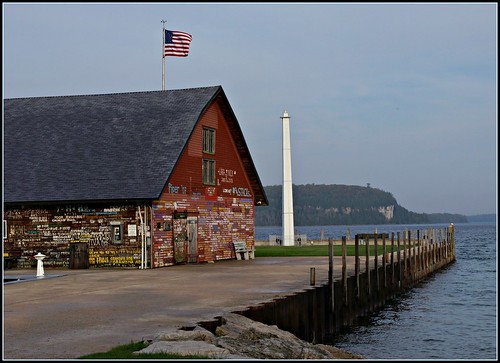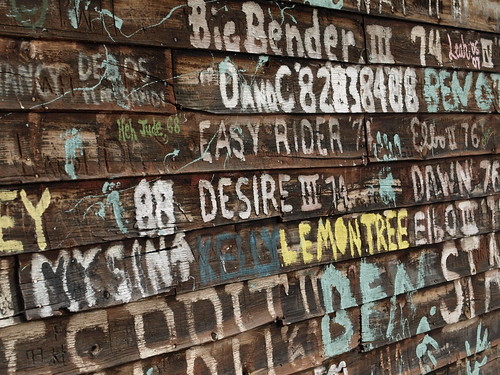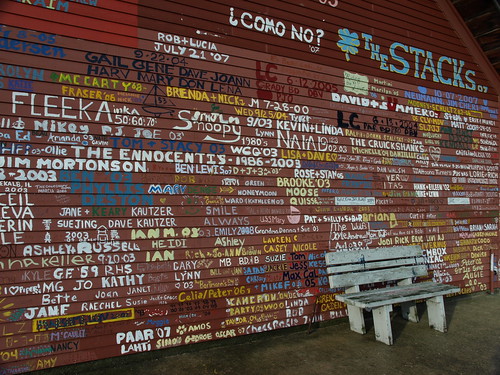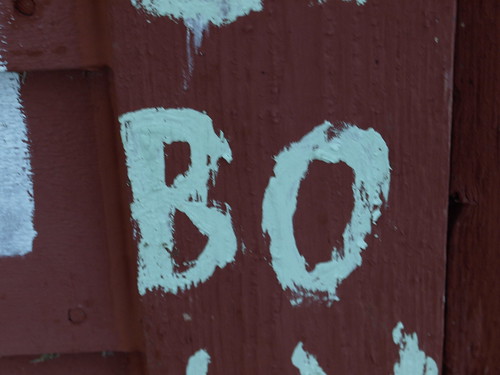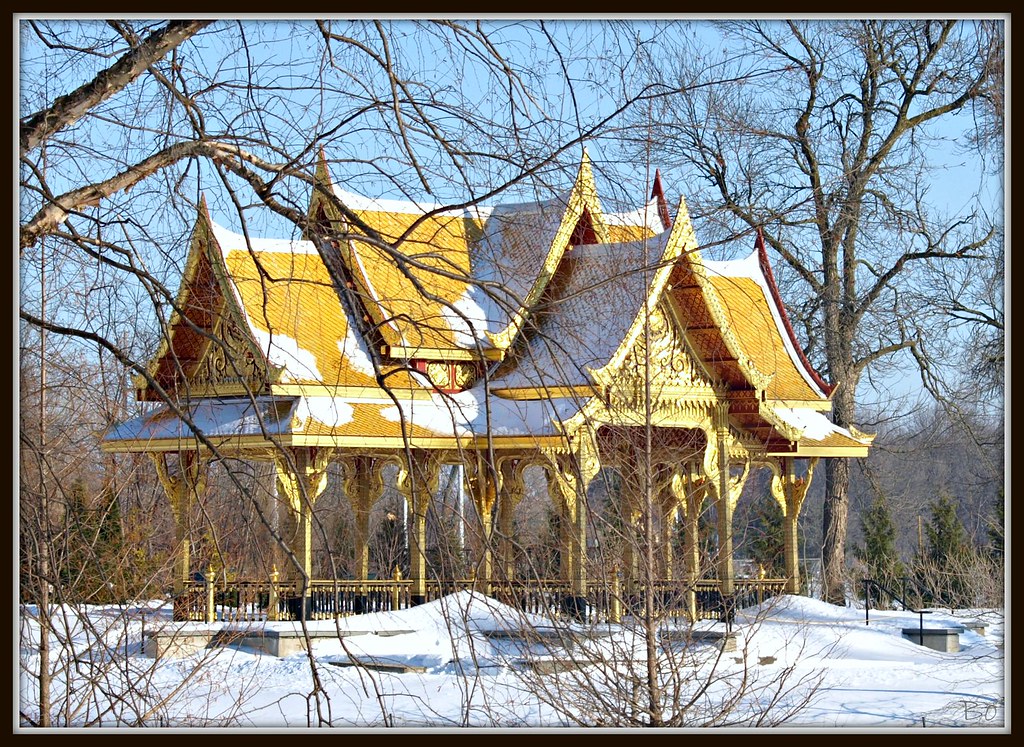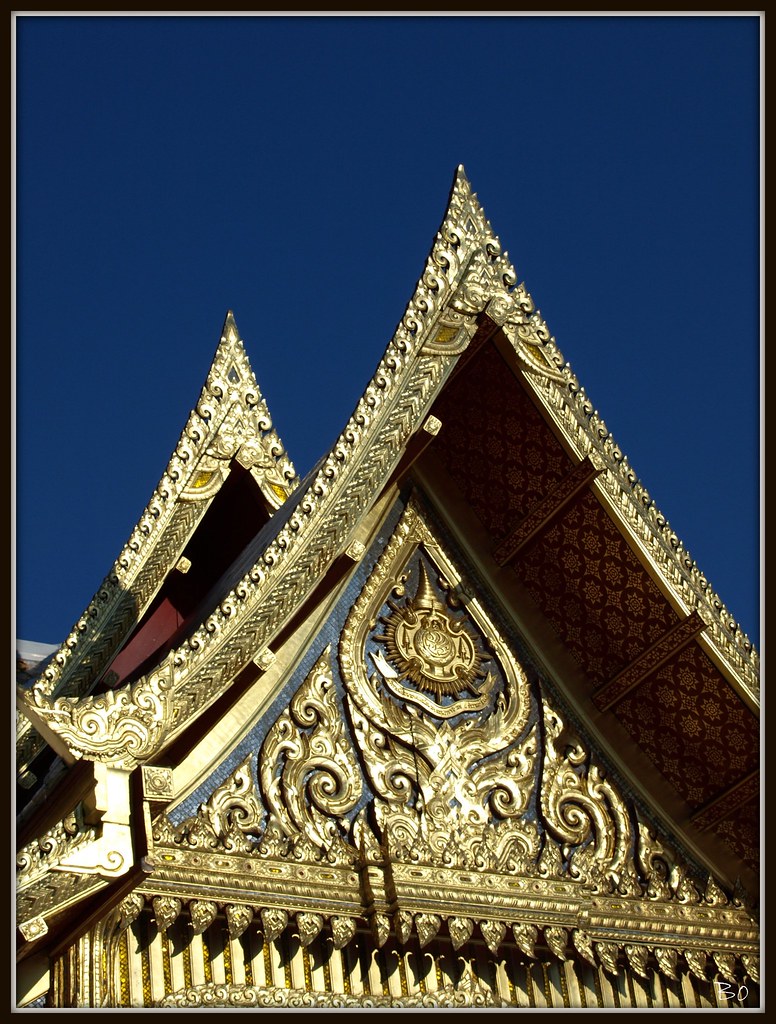When I was in Door County, Wisconsin last weekend, I stopped in the village of Ephraim and visited one of the more famous buildings on the peninsula. (The county is the northeastern bit of Wisconsin that sticks out into Lake Michigan like a thumb.) The building is famous enough – it’s even on the National Register of Historical Landmarks.
Historically, here at the Anderson Warehouse – built in 1895 – visiting boaters have “signed” the warehouse walls with their boats’ names and the year or years they have docked here.
The city fathers of Ephraim have even posted a sign which “encourages boaters and visitors to continue the tradition by being creative but tasteful when adding nautical names to the walls.”
They give some instructions: “Inappropriate words or symbols will not be tolerated. Do not use spray paint, carve or scratch the wood.”
And then they give a warning: “Persons caught defacing public property inappropriately will be prosecuted to the fullest extent.”
NOTE the word inappropriately. You have everyone’s blessing to deface the public property all you wish, as long as you do it appropriately.
I love some of the boats’ names: Desire III, My Sin, Big Bender III, Easy Rider. I really do understand the temptation to be creative when naming your craft. I own half of a little fishing boat and I have always wanted to christen it King Lure, but the other owner refuses. I don’t understand why . . .
Lots of birthdays, marriages, anniversaries are noted. It’s rather fun to read.
And look, I even found my own name! I’m thinking every town should have a graffiti wall of their very own.
